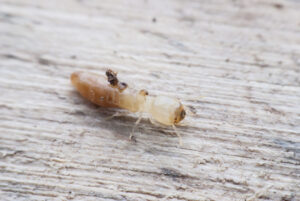Summertime in Chicago brings sunshine, warm breezes—and unfortunately, termites. While most homeowners are focused on cookouts and home improvements, termites are quietly doing their own kind of damage beneath the surface. These destructive pests become especially active in the warmer months, which makes summer the ideal time to schedule a professional home inspection.
At First Choice Inspectors, we know exactly where termites hide and how to spot signs of their activity early—before serious damage occurs.

Why Summer Is Peak Termite Season
As temperatures rise, so does termite behavior. Summer provides the perfect conditions for termites to thrive: warmth, moisture, and plenty of wood to feast on. Subterranean termites—the most common type in the Midwest—begin to swarm during this season, sending out winged termites to form new colonies. Once they settle in, they work silently, tunneling through wooden structures, often undetected for months or even years.
This is why a summer inspection isn’t just smart—it’s essential.
Clues an Inspection Can Uncover
Termites are experts at staying hidden, but a trained inspector knows how to uncover their trail. Our certified team looks for specific indicators that often go unnoticed by the untrained eye:
- Hidden Wood Damage
You won’t always see visible damage on the surface. Termites hollow out wood from the inside, so we check for soft spots, blistering paint, or hollow-sounding beams that suggest a deeper problem.
- Mud Tunnels
Subterranean termites build pencil-sized mud tubes to protect themselves as they travel from the soil to the wood. These tubes are commonly found near foundations, crawl spaces, and inside walls.
- Moisture Problems
Excess moisture is a magnet for termites. Using thermographic imaging, we detect hidden leaks and damp areas inside walls and under floors where termites might be setting up shop.
- Signs of Swarming
Termite swarms are brief but noticeable. Discarded wings near doors, windows, or in basements are a major red flag that termites have already started colonizing.
- Frass and Exit Holes
Drywood termites (less common but still possible in older Chicago homes) leave behind tiny piles of droppings called frass and create pinholes in wood surfaces. We know where and how to look for these subtle signs.
Why Early Detection Matters
The damage termites cause can be extensive—and expensive. Left untreated, a colony can compromise support beams, floor joists, and other structural elements. Catching them early during a summer inspection could mean the difference between a simple treatment and a major renovation.
With the housing market heating up, summer is also a popular time to buy and sell homes. A pre-purchase inspection with termite detection gives buyers peace of mind and can save thousands in surprise repairs.
Termite Checks Are Part of Every Inspection
At First Choice Inspectors, every home inspection includes a Wood-Destroying Insect (WDI) inspection—so you never have to worry about termites slipping through the cracks. Our certified inspectors combine years of experience with advanced tools like moisture meters and thermal imaging to catch infestations before they become nightmares.
Don’t let termites take advantage of your home while you’re enjoying the season. Whether you’re purchasing a new home or just staying ahead of maintenance, a professional inspection now can protect your home’s structure—and your wallet—later.
Contact First Choice Inspectors at 773-429-9711 today to schedule your termite inspection today.